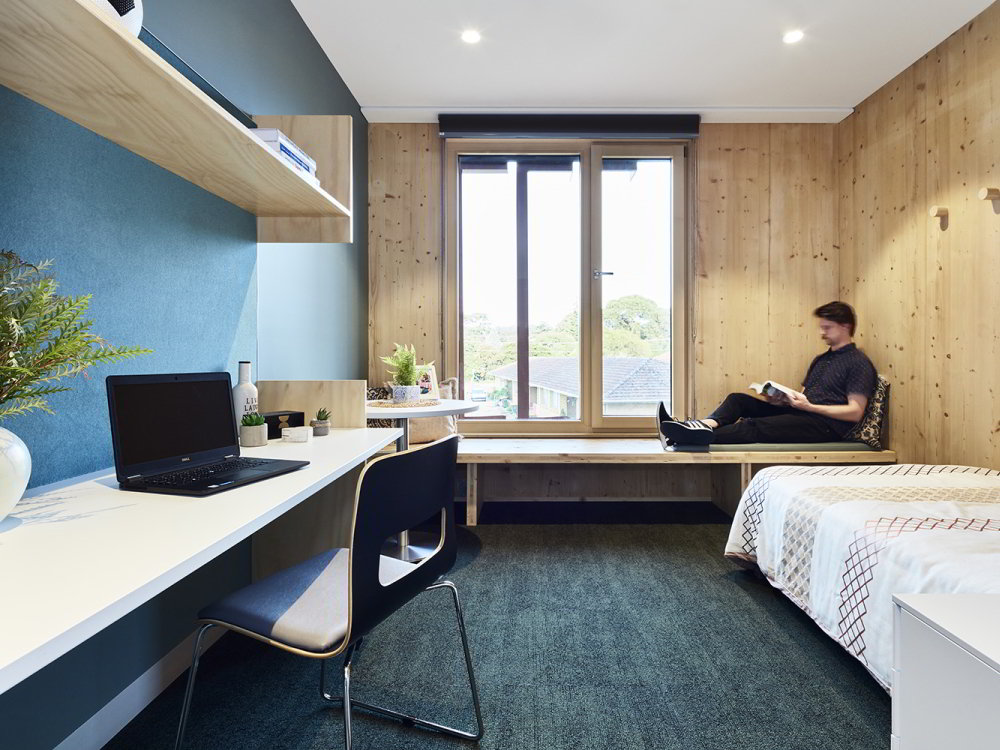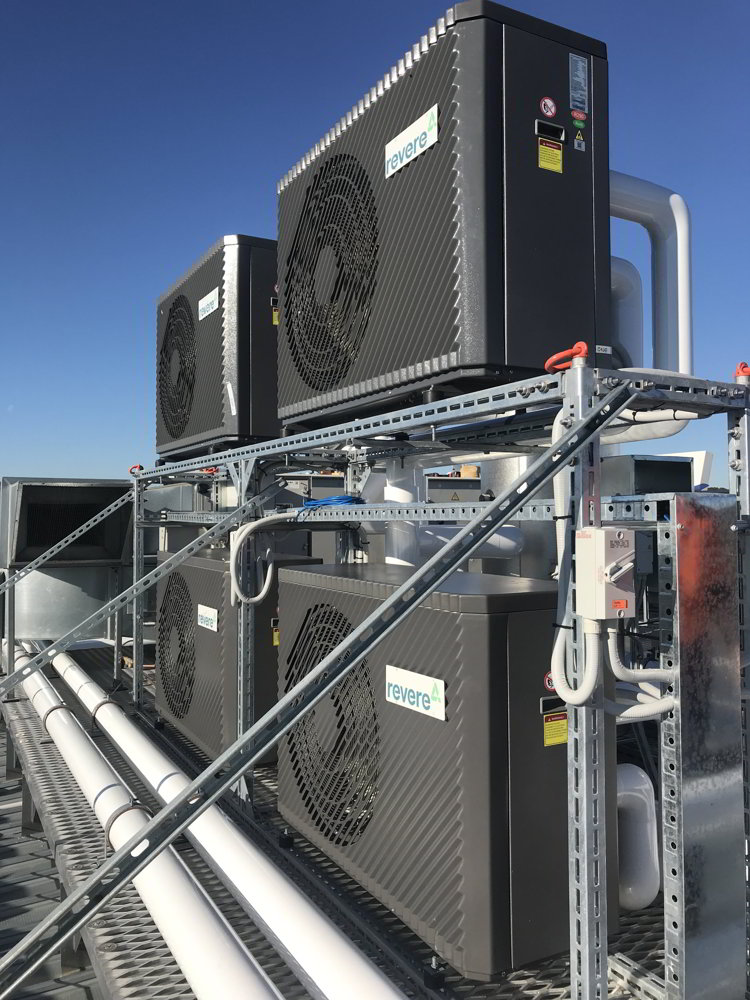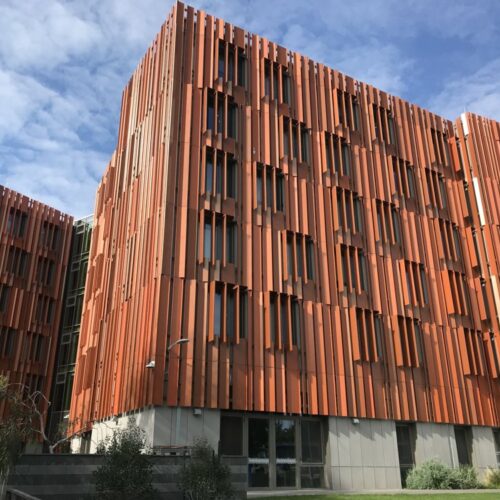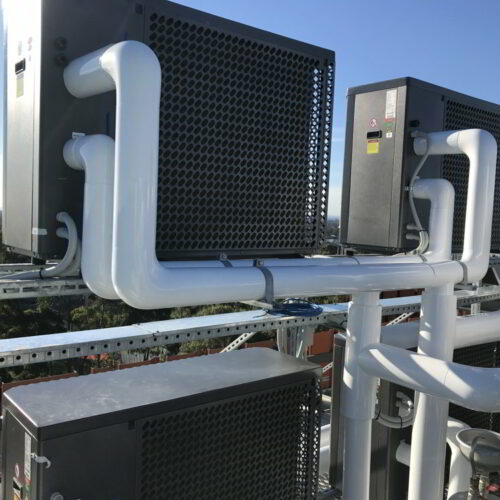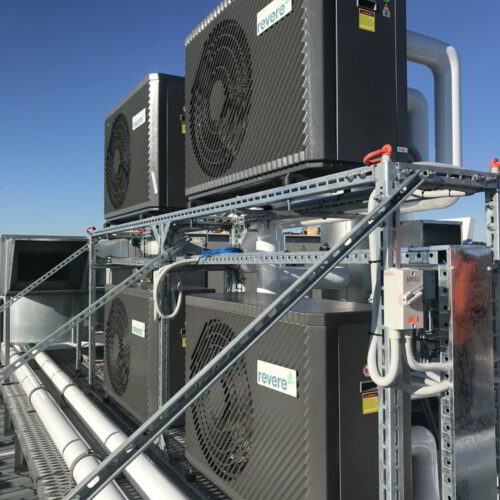Gillies Hall
Built by Multiplex and designed by Jackson Clements Burrows Architects in collaboration with AECOM for building services, the building was constructed to reflect the surrounding environment, minimize energy consumption and carbon footprint, and encourage communal life at the campus.
The structure is composed of two connected volumes, allowing each floor to be divided into two wings. To maximize interaction between residents, each wing was designed to mimic a village-like atmosphere composed of 15 apartments with a shared lounge and kitchen, instead of a usual hotel-like double-loaded corridor. In addition, the ground floor features a range of communal spaces including common rooms, a games room, and a music room.



